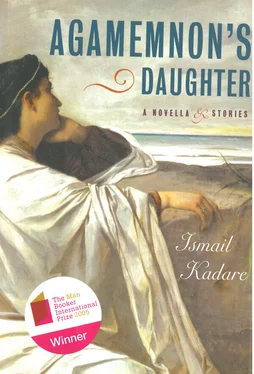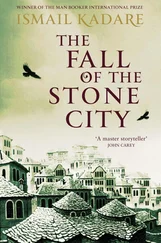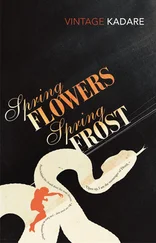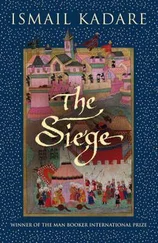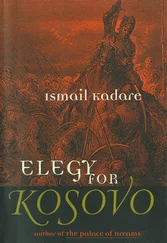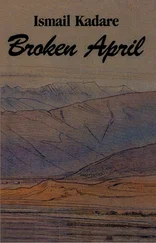Ismail Kadare
Agamemnon's Daughter
This volume contains three stories written at different times, set in different historical periods, but linked to one another and to many other works of Ismail Kadare by recurrent characters, anecdotes, obsessions, and principles.
Agamemnon’s Daughter was written in Tirana around the time of the death, of Enver Hoxha, who ruled Albania for forty years. The action is placed in the real Tirana of the early 1980s, but its narrative takes us back to the classical roots of Western civilization — and of tyranny. Its sequel, The Successor, written many years later, brings the same characters back to life.
“The Blinding Order” was written in 1984 and is set in the Tanzimat, or “reform” period of the Ottoman Empire, in the nineteenth century. It speculates on the uses of terror in a context that is only superficially remote from modern authoritarian regimes. Mark-Alem, the central character of Kadare’s Palace of Dreams, makes a fleeting appearance; the main protagonists belong to a branch of the Köprülü clan, whose long history is chronicled throughout Kadare’s work.
“The Great Wall” was written in 1993, shortly after Kadare settled in Paris, The bridge built by the Ura family, whose story is told in The Three-Arched Bridge, here gives a key to the meaning of the Great Wall of China. We also encounter the horrifying Timur the Lame (Tamerlane), who gives such a stunning conclusion to The Pyramid, Kadare’s fable of ancient Egypt.
The first of these stories was translated from the French of Tedi Papavrami; the two others, from the French of Jusuf Vrioni. Some amendments have been made to the texts in consultation with the author, particularly with regards to Albanian names and spellings.
D.B.
Princeton, N J., 2006
ABOUT AGAMEMNO’S DAUGHTER
Adapted from the publisher’s preface to the French edition
In 1986, during one of his infrequent visits to Paris, Ismail Kadare told me that he wanted to leave the manuscripts of two short novels, a story, and some poems in France, as they could not be published in Albania at that time.
He had part of the material with him. “Exfiltration” of literary manuscripts was strictly forbidden under Albanian law, so Kadare camouflaged his text to make it look like an Albanian translation of a work written in the West. He had substituted German and Austrian names and places for Albanian ones, and attributed the works to the West German novelist Siegfried Lenz. Lenz was not unknown in Albania, but not to the extent that people could be sure whether he had written a novel called The Three Ks , as Kadare then entitled the novel subsequently known as L’Ombre (The Shadow).
Later on, Kadare managed to smuggle more of his manuscripts out of Albania, but because exfiltration remained extremely perilous, he limited his risks by bringing only a few pages on each trip. To get the remainder of the material out of the country, we agreed that the best way was for me to go to Tirana myself. Over two separate trips, I managed to bring all the remaining sheets back to Paris so as to have complete texts of The Shadow, Agamemnon’s Daughter, L’ Envol du Migrateur ( A Bird Flying South ), and the poems.
The manuscripts were deposited in a safe at the Banque de la Cité in Paris. With the bank’s approval, Kadare entrusted me with the key to the safe and gave me authority to open it if and when I thought it necessary.
At that time Ismail Kadare had no greater inkling than anyone else that Albanian Communism would collapse. The deposit of these “dangerous” manuscripts was intended to allow Kadare’s publisher, in the event of the writer’s natural or “accidental” death, to declare that a previously unknown portion of his work would be published quickly. The revelation of the tone and content of the unpublished works would make it much harder for the Communist propaganda machine to bend Kadare’s work and posthumous image to its own ends.
The three prose texts and the poems put into the bank’s safe express directly and unambiguously what Kadare thought of the Albanian regime. Previously, he had touched on the matter only indirectly and by allusion, in works like The Palace of Dreams, La Niche de la honte (The Nook of Shame), and The Concert.
The first of these hidden works to appear in France was The Shadow, in 1994. It was rewritten to erase its German camouflage, especially noticeable in the earlier part of the novel Editorial improvements were made to fill gaps that had been left quite intentionally when the work’s primary aim had been to get a message across — in the literal sense, across the border separating Albania from the rest of the world.
A Bird Flying South was published later. In Albania, it was published simultaneously in two versions — the original text as smuggled out of Albania and a corrected and edited version, the form in which Kadare wished it to return to Albania.
Agamemnon’s Daughter , the third of the manuscripts put into safekeeping, was published in France in 2003 in a translation by Tedi Papavrami from the text written in 1984–1986 without any later changes or revisions. Agamemnon’ s Daughter is the first part of a diptych of which the longer tale, The Successor, was written in Paris in 2002. Taken together these two short novels constitute one of the finest and most accomplished of all Ismail Kadare’s works to date.
CLAUDE DURAND
PARIS
1
From outside came sounds of holiday music, bustling crowds and shuffling feet — the special medley of a mass of people on their way to the start of a parade.
For perhaps the tenth time in a row, I cautiously pulled the curtain aside. There had been no change in what was to be seen in the street: a slow-moving eddy in the human flood streaming toward the center of town. Borne on its waves were placards, bouquets of flowers, and portraits of members of the Politburo, just like the ones we saw last year. The politicians’ faces looked even more stilted than usual as they jiggled along above the thronging mass of heads and arms. A slip of a placard-bearer’s hand sometimes made the painted portraits seem to cast oblique and threatening glances. But even when they came face-to-face, not one of them gave a sign of recognizing any other.
I let go of the curtain and realized that I still had the invitation gripped tightly in my hand. It was the first time I had been entitled to sit in the grandstand at the May Day parade, and I still could not quite believe that it really was my own name written on the card. When I first received it, the Party secretary seemed as stunned as I was. It wouldn’t be fair to say that the only emotion in his eyes was that of envy: there was also stupefaction. To some extent, that was perfectly justifiable. I wasn’t the kind of person who was usually seen at presidium meetings or invited to sit in the stands at public celebrations. Even if (as I later learned) the vice-secretary himself had put my name forward when requested by the local Party committee to suggest people beyond those who came up every year, he was still astonished by the result. Although he had proposed my name, he probably never expected his new list would be approved. “They always ask us for new names,” he must have thought, “but it’s always the same ones who get invited in the end.”
“Congratulations, congratulations,” he hissed as he gave me the card, but at the very moment he handed it over, his eyes seemed to me to express something beyond envy and surprise. It hovered within the smile that gave it life, yet it was something separate and different. The right word for it might have been connivance. In short, it was an intense, interrogative, and rather sly smile, but sly in that particular wellmeaning manner that arises between people who share some secret involvement. His smile seemed to be saying: “This invitation didn’t fall off a tree, did it, pal? What job did you do to earn the reward? But who cares anyway! Congratulations, my boy!”
Читать дальше
